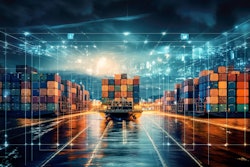
The ongoing situation in the Panama Canal continues to disrupt and delay supply chains. The drought has forced carriers to frantically search for alternate routes, offload costly containers, and spend time and money adapting their strategies. Mexico’s upcoming hurricane season will only intensify the problem; should a hurricane hit either the Gulf or Pacific side, that’s going to be disastrous for ships there. Worse, this clog in the supply chain will soon mean issues for ports, rails, and other shipment modes, which will be unable to keep up with shippers’ urgent needs and increased demand. Starting with the Canal as its center, this ripple will travel outward in all directions, impacting the nodes connected both up and downstream in your supply chain.
With no end to the Panama Canal restrictions in sight, companies must employ mitigation strategies to prevent threats associated with stalled cargo and their resultant ripple effects. No two companies will have the exact same solution because no two companies face the exact same risks, even within this shared situation. However, all companies can better understand and address their own unique risks by turning to visibility solutions.
Visibility solutions provide companies with in-depth data and insights regarding their supply chains. By enabling companies to see where their shipment is, where it’s headed, and what risks it might be facing along the way, visibility solutions ensure that companies can spot problems before they arise. As an example, visibility solutions can provide alerts regarding product quality issues, such as temperature deviations. This is especially important for food and beverage companies, who are currently trying to keep their perishable products in good condition while accounting for massive backlogs. These solutions can also help prevent theft, which tends to rise in high-profile situations involving stalled—and thus, more readily accessible—goods.
Along with helping shippers identify problems, visibility solutions also enable improved response times. In the case of the current drought, companies working with real-time transportation visibility providers were likely informed of the situation in real-time as opposed to hearing of it through open-source media. This quicker timing can make all the difference because the sooner you’re aware of a situation, the more options you have for solving it. In this instance, quicker knowledge of the Panama Canal situation would have provided companies with more time to transition their cargo to land and placed them first in line to book services from limited carriers.
The advantages of these solutions become even more apparent when looking back at earlier supply chain crises. Visibility solutions help leaders analyze these events to better understand what went wrong and why. For example, if you had cargo going through the Suez Canal, how did that impact your supply chain? A few years before that, how were you affected by the issues with railyards in California? While most companies can give a general response—which will be something in the vein of “badly”—businesses who employed visibility solutions were better equipped to analyze how their supply chains were affected, which in turn helped them avoid even more issues and respond to those at hand.
Global events like the current drought used to be so rare, but now, they’re commonplace. In fact, we’ve experienced a number of world-altering logistical events in the past 3-4 years alone. While we can’t go back in time, we must learn from the past in order to adapt to the current situation and better prepare for the future. In short, visibility solutions help companies weather the Panama Canal situation and predict and prepare for what’s ahead.
Between global warming, political strife, and increased criminal activity, there will always be more risks on the horizon. It’s expected that next year will be even hotter than this year, which will likely mean another drought, more delays, and more risks. This heat will especially affect container ships coming from Asia through the Panama Canal to the east coast of the United States and Latin America. However, due to the ripple effect and intermodal nature of supply chains, no companies will emerge unscathed.
Companies who start using visibility solutions now will be better prepared for the next supply chain crisis. On the other hand, companies lacking visibility are set to repeat the same mistakes.
As we enter the holiday season, expect even more shipments battling their way through the Canal. Already, there's backlogs of over 200 ships. If we don’t take action quickly, this could mean hundreds or thousands of containers of spoiled Thanksgiving turkeys or holiday hams, which in turn means millions or billions in lost revenue and unhappy customers.
A reactive approach is no longer enough; it’s time for shippers to take a proactive stance against risk. Visibility solutions will help them understand the state and location of their products while allowing them to respond quickly and take steps to avoid further issues. It’s easy to “see” why these solutions are gaining traction, and with more widespread implementation, supply chains will make it through these ongoing restrictions. This will leave them not only ready for the upcoming hurricane and holiday seasons, but other storms to come.



















